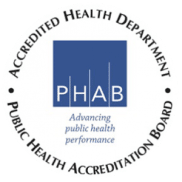Source Water Assessment and Protection Programs
“The 1996 Amendments to the SDWA establish the Act as an environmental law, better integrated within itself. The new law goes beyond a simply regulatory approach to add a new “prevention” orientation, one that seeks to prevent problems by increasing public water systems’ capacity to provide safe drinking water, and by protecting the source waters from which we draw our drinking water.” Robert Perciasepe, Assistant Administrator of EPA.
On August 6, 1997, EPA released the State Source Water Assessment and Protections Programs Guidance. It contains EPA’s recommendations for what should be the elements of a state Source Water Assessment Program (SWAP) and Source Water Protection Program (SWPP). It is EPA’s draft goal that “by the year 2005, 60% of the population served by community water systems will receive their water from systems with source water protection programs in place.”
How will this goal be reached? First, is to build on past accomplishments that resulted from the 1986 Amendments, such as the Wellhead Protection Program. The second step is to build on other key foundations such as EPA’s Watershed Approach. This Watershed Approach provides a means to better focus water pollution control efforts on the protection of drinking water supplies. Third, is to maximize the use of the new tools and resources provided under the 1996 Amendments, with its emphasis on public involvement and new SWAPs, which should lead to SWPPs.
A consistent theme in the new law and the guidance is that States have both new flexibility and resources to tailor programs to State needs and conditions, especially in the prevention area, and the obligation for public information and involvement to ensure that States’ choices respond to their constituents’ needs and concerns. The State SWAP must delineate the boundaries of the areas providing source waters for public water systems, and identify, to the extent practical, the origins of regulated and certain unregulated contaminants in the delineated area to determine the susceptibility of public water systems to such contaminants.
We are currently working to develop a delineation and analysis method that has a scientific method and is universal enough to enable us to get the assessments completed by the deadline mandated by Congress and the EPA. To assist us in this endeavor, we have been consulting with the Water Division of the United States Geological Survey, the Arkansas Water Resources Center and the Centers for Advanced Spatial Technologies (both associated with the University of Arkansas at Fayetteville), and persons from EPA Region 6.
Due to the facts that we have over 1500 sources of public drinking water in the state, and the two-year timeframe for completion, we have reached the conclusion that we will have to outsource portions of this project. Negotiations have begun with the aforementioned groups, but no contracts have been awarded to date.
The 1996 Amendments emphasize public involvement for the SWAP. There is an obligation for public information and involvement to ensure that States’ choices respond to their constituents’ needs and concerns. The Guidance requires that all parts of this process be done with the assistance and input of Advisory Committees, both Citizens’ and Technical. These committees will review our proposed plan and methodology and provide advice and other input on the plan prior to finalizing any contract agreement. Committee meetings will continue until a plan is completed. Prior to submittal to EPA, a series of public hearings will be held to present the plan to the general public for comment. At this time, we are proposing to hold five hearings, one in each quadrant of the state and one in Little Rock. Dates and times for the public hearings will be announced later.
Each assessment is for the benefit and protection of the public water systems, that is, for the purpose of developing an SWPP to protect the drinking water for that area. Therefore, States must make the results of the assessments available to the public. Assessments are a tool for further efforts, not a complete process in and of themselves. EPA believes that States should plan for protection programs simultaneously as they plan for and implement their SWAP.
This program will be refined and evolving past the deadline date and will be utilized to assist communities and water systems in the State to develop local watershed and wellhead protection programs. The assessment should direct local groups or agencies to develop their plans to protect against the worst hazards and to focus their resources on the greatest areas of need. Each local plan should be customized to the particular area and the hazards, both actual and potential, contained therein.
The Watershed Approach focuses Federal, State, Tribal, and local government programs and citizen efforts for environmental and public health management within hydrologically defined geographic areas, taking into consideration both ground and surface water flow. The results of the assessment efforts and other programs can be used so all levels of government can better understand the cumulative impacts of various human activities and determine the most critical problems within the watershed. This facilitates the allocation of limited financial and human resources to address the areas with the most critical needs. The watershed approach promotes teamwork between the public and private sectors to achieve the greatest environmental improvements with the available resources. The results of the SWAP can be utilized and provide benefits to other EPA programs. As the assessments are completed, other State and Federal programs will be able to reset priorities for prevention efforts to reduce or eliminate contaminants flowing into PWS wells or intakes. This should also increase awareness of State and Federal managers of other programs that action in these areas should be a high priority for the protection of public health.


